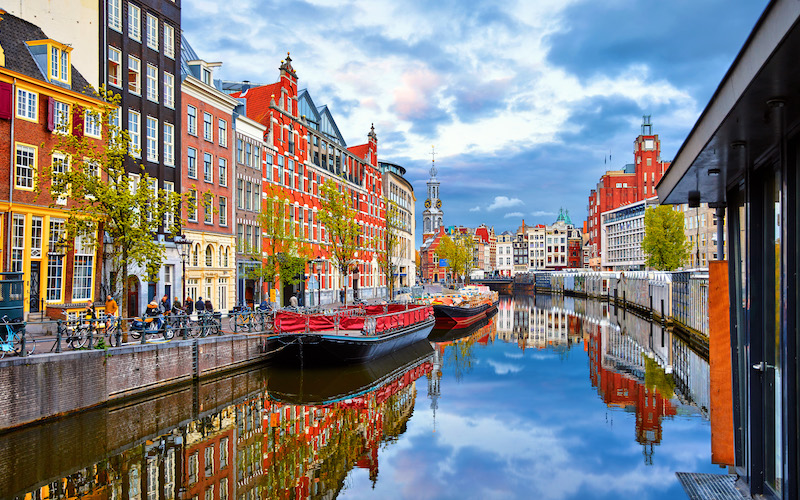
The Dutch need to coordinate their different regulatory and behavioral responses to tackle COVID-19.
The lyrics of a popular 90s Nederpop song called “15 miljoen mensen”—named after the number of inhabitants in the Netherlands at the time—famously contains the line that on the “tiny piece of Earth” that is the Netherlands “one does not lay down the law.”
Indeed, Dutch Prime Minister Mark Rutte may have had in the back of his mind the conventional wisdom that the Dutch do not like to bow to authority when he called for an “intelligent lockdown”—a term that the Prime Minister personally invented. By calling the approach a “lockdown,” it becomes harder for opposition hawks to criticize the government. According to one report, the meaning of the word “intelligent” is twofold: people are called upon to be “smart” about the situation, and the government wants to convey that it intends to be flexible when it comes to adjusting measures over time. It does not, however, appear to be a reference to “smart regulation.”
The intelligent lockdown approach emerged in mid-March, following the National Institute for Public Health and the Environment’s slow reaction to COVID-19 during the early days of the pandemic. Like in Britain, the Prime Minister in the Netherlands flirted with the idea of herd immunity. In a speech on March 16, Rutte indicated that out of three possible approaches—mitigating the virus’s spread, allowing the virus to run its course, and working endlessly to contain the virus—the government had chosen mitigation. The National Institute for Public Health and the Environment and the Prime Minister both quickly clarified that herd immunity was not the government’s aim, but rather a by-product of the pandemic. In subsequent communications, the government avoided the controversial term, but in essence the Dutch approach remains “to control the virus as much as possible,” which means that it is not always clear whether the strategy is to do everything reasonably possible to fight the spread of the virus or to “flatten the curve but not too much.”
The sizable list of Dutch coronavirus measures grew over the course of several weeks in March and April 2020. The intelligent lockdown was given effect through a Swedish-style collection of recommendations, which cannot be traced to any official document, and a set of rules and bans laid down in decentralized emergency regulations.
The result is a confusing blend of soft law, hard law, general norms, such as “stay at home as much as possible,” and overwhelmingly specific policies, including mandatory requirements that people stay home if they have certain symptoms. The Dutch regulatory approach also has some overly subtle distinctions, such as the difference between “organized gatherings,” which are prohibited everywhere with certain exceptions, and “spontaneous gatherings,” which are allowed in most places with 1.5 meters interpersonal distance. These subtle distinctions make for a compliance nightmare.
The Netherlands is among the countries that did not invoke a state of emergency, but instead it relied on the possibility of enacting regional emergency regulations. The Dutch unitary but decentralized state structure at first glance appears to be relatively deferential to local government. The regional emergency regulations are adopted by 25 safety regions, which have existed since 2010 and consist of collectives of municipalities that specifically cooperate on security matters. Super mayors—the mayors of the largest cities in these regions—are authorized to adopt these emergency regulations. The regions, however, have coordinated on the vast majority of provisions with involvement from the central government. This coordination has resulted in a core set of what effectively are national rules, with some regions adopting additional bans on activities such as tourism and barbecuing from the start, and with more differentiation occurring as the easing of the lockdown began in the first half of May.
Critics of the regional emergency regulations have raised questions about the constitutionality of these regulatory measures. A crucial difference between these regulations, based in Article 176 of the Municipalities Act, and emergency laws and regulations adopted in a state of emergency, is that the former must comply with the Dutch Constitution in its entirety. The COVID-19 emergency regulations do not, however, always comply with the Dutch Constitution.
For instance, the emergency regulations banning gatherings include exceptions for religious gatherings, in compliance with the Constitution, but not for other constitutionally protected practices. A COVID-19 emergency regulation has been used at least once to prohibit a far-right demonstration, when a regulation of this kind cannot lawfully sustain such a decision. Authorities also assert that these regulations could be used to break up and sanction gatherings in private homes, violating Article 12 of the Constitution, which outlaws “entry into a home against the will of the occupant.”
The government could address some of these concerns by declaring a state of emergency and adopting emergency statutes. This approach would not, however, address every issue because Article 103 of the Constitution, which regulates the state of emergency, contains a limited list of rights that may be set aside. There also appears to be a consensus among the Dutch constitutional law community that declaring a state of emergency would not be suitable—or at least necessary—because regular statutes may limit most constitutional rights to a certain extent. In response to criticism, the government announced that it is preparing urgent statutory legislation to replace most of the emergency regulations, acknowledging that the current construction of regional emergency regulations is too much of a shortcut. Despite these changes, the infamous absence of constitutional review of legislation in the Dutch system is likely to cast its shadow over this process.
The Netherlands’s chosen regulatory blend of soft and hard law and of advice and command-and-control creates a high degree of uncertainty, resulting in a lot of private discretionary decision-making.
For instance, people tend to reconcile inconsistencies in the above-mentioned rules about different types of gatherings in a highly personalized way. Public spaces throughout the country remain crowded, indicating that people in the Netherlands do not all have the same ideas about when going outside is necessary. The government’s warnings that compliance on weekends was too low had some effect in the subsequent weekends, but overall compliance varies tremendously among people and over periods of time. On King’s Day, April 27, the Dutch largely stayed at home, but on several normal Sundays certain parks, beaches, and city centers were flooded with people.
Perfect compliance is not necessary for the government’s COVID-19 regulations to be effective. The Prime Minister’s mitigation strategy can handle a few free-riders. The strategy, however, crucially hinges on the government—and specifically the Prime Minister—being able to convince the majority of Dutch people to take the rules and recommendations seriously. One of Rutte’s favorite lines in his COVID-19-themed press conferences is “we are doing this with 17 million people.”
But here the approach encounters its fatal flaw. Changing behavior was always going to be difficult due to the Dutch people’s dominant lifestyle and individualistic mindset. Bringing about such change is even harder because it must be done with a set of very open or very legalistic norms that regulators appear to have designed to make compliance difficult and arbitrary.
Although both the substance of the COVID-19 challenge and the institutional setting are well-suited for regulations based on behavioral analysis, the Netherlands missed the opportunity to adopt such regulations. As in most countries, some behavioral tactics have been employed, such as tape on the floors of shops to indicate the desired distance to keep apart. The government has not experimented, however, with smart behavior-oriented instructions such as directing people to think of themselves as asymptomatic contagious carriers of the virus every time they leave the house.
The shortcomings of the COVID-19 regulatory framework result from a number of challenges. The government did not have sufficient time to prepare for the pandemic and was forced to react quickly. The government’s main advisory body lacks transparency and multidisciplinarity. Now that it appears, however, that the Netherlands will be in crisis mode for the foreseeable future, hopefully Dutch authorities will take the time to integrate behavioral insights into their regulatory approach to address the pandemic.
This essay is part of an ongoing series, entitled Comparing Nations’ Responses to COVID-19.




